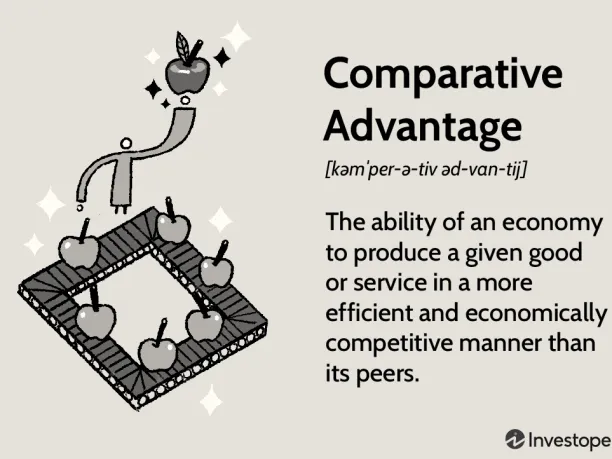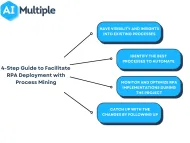5 Benefits of RPA for BPO Companies in 2024
The global market size for business process outsourcing (BPO) is currently $262B and is expected to reach $525.2B by 2030.
So even though outsourcing is a popular business strategy, it’s not without its drawbacks, for firms that are outsourcing might:
- Lose control over their processes
- Be sacrificing on quality control
- Have trouble coordinating with overseas
If businesses partner with outsourcing companies that leverage RPA in their workflows, they can bypass these challenges and be assured of high-quality work.
In this article, we explain what BPO is, what RPA BPO is, its benefits, and more.
What is BPO?
According to Gartner, BPO, or business process outsourcing, is when an external third party takes care of a business’ IT-intensive business processes.
BPO companies do core, back-end business functions such as:
- Human resources
- Payroll
- Legal
- Compliance
- Accounting
- Order-to-cash
- Tax management
- Financial close
- Marketing
- Sentiment analysis
- Competition monitoring
- Pricing
- Customer experience
- Call centers
- Troubleshooting
What is a real-life example of BPO?
The order-to-cash (O2C) process involves interdepartmental coordination:
- The warehouse confirms inventory for an order
- The accounting department issues invoice
- The logistics department schedules shipment and confirms delivery when the good reaches the destination
- The accounting department follows up on receivables, collects and verifies payments, and makes a journal entry
The accountants involved in the O2C process:
- Need not be on-site
- Can do their tasks remotely
- Communicate the results via messaging apps and/or emails. In the UK, accounting makes up 24% of the outsourcing market.
For instance, a company in the technology industry found it expensive, inefficient, and time-consuming to do its accounting. So they outsourced it to an accounting agency1.
What is RPA BPO?
RPA (robotic process automation) is using software robots to undertake rules-based processes across business functions. RPA’s use cases range from data entry to expense management.
RPA can often automate 70-80% of a rules-based process. The majority of business operations that are outsourced to BPO providers are repetitive, rule-based, back-end processes, all of which are excellent candidates for RPA automation.
RPA BPO is BPO providers using RPA to run quicker, more efficient, and less error-prone workflows. Generally speaking, the benefits of using RPA for BPO providers are not significantly different than businesses themselves leveraging it.
Nevertheless, we will go into the details of the benefits of RPA BPO next.
What are the benefits of RPA BPO?
1. Reduced costs
By implementing RPA technology, the BPO provider will have bots do the jobs that it should have otherwise hired human staff to do.
In a typical company’s finance department, for instance, RPA has the potential to save 25,000 hours. As the robots take on more tasks and tirelessly complete them simultaneously, RPA saves the BPO provider from hiring staff.
This benefit shines brighter especially when we consider that the real wage in developing countries has grown, and so outsourced labor is not as “cheap” as before, both for the BPO provider and the client using the services.
2. Real-time monitoring
A business in Los Angeles is 12:30 hours behind New Delhi, assuming that they have outsourced there. The time difference makes it challenging for managers in America to interact — via chat, voice, or video calls — with their counterparts in India to receive the latest progress updates.
Most BPOs today already use AI-enabled, cloud-based software programs for their workflow processes. And these programs offer visible dashboards for the real-time monitoring of:
- How the embedded RPA bots are functioning,
- Whether or not there are bottlenecks,
- The need for human interference,
- The estimated completion time of a task, and more.
These metrics give department directors and supervisors worldwide 24/7 visibility into how processes are being carried out, pain points, and whether additional actions are necessary.
So another benefit of RPA BPO is that it reduces the difficulties caused by time differences and eliminates the requirement of being in the same time zone.

3. Higher degrees of specialization
The comparative advantage theory bangs on the drum of specialization.
For BPOs, specialization means that if one firm is a leader in providing HR services, and the other is at the forefront of customer experience, each is better off sticking to, and improving on, what it has a comparative advantage in.

Especially with automation, as a whole, creating new jobs that didn’t exist before, companies should seek to specialize in the niche offerings they’ve based their business plans on.
RPA comes in different types. This allows BPOs to:
- Quickly program bots through drag & drop and other low-code/no-code programming options that address their needs on a high level
- Ask RPA consultants to create new bots for specific needs that can’t be found off-the-rack
- Add add-on capabilities (like browser extensions that we add) via RPA marketplaces
RPA BPO allows service providers to not only do the mundane segments of their processes more efficiently but also:
- Be agile in response to the ever-changing market and customer dynamics to provide new services
- Provide their human staff with ample retraining opportunities and workshops
- Hire more efficiently and keep the headcount within financially sensible and optimized bounds
4. Scalability
RPA BPO’s combination meets the demands of remote working. With the prevalence of remote working on the rise, BPO providers must have the sustainable infrastructure to accept new clients and not lose them to their competitors.
Building your workflows around RPA helps businesses accept new clients instantly, without having to worry if they have enough workforce to keep up with the new demands.
Scalable RPA bots may perform the same activity simultaneously for multiple clients. For instance, if a BPO specializes in web scraping for e-commerce businesses, it doesn’t matter whether their customer base is tiny or vast, given that they have a set of infrastructure in place. The bots can scrape the relevant results and carry out their tasks as long as they are accurately programmed and capable of doing it.
And if at a tipping point, the BPO realizes they need to purchase additional bots or add new features, RPA vendors can offer their existing customers discounts and corporate deals to get the job done. RPA BPO allows companies to be scalable and not shy away from taking on new customers for a fear of lack of technical resources.
Learn more about RPA vendors’ pricing models.
5. Efficiency and consistency
RPA bots, being robots (!), are more efficient and consistent than human staff.
Consistency is crucial, especially when it comes to customer retention and churn reduction. RPA bots can do the same task over and over again without getting tired, losing their focus, or getting off track.
The benefit is that once the BPO gets over the hurdle of convincing a foreign company to trust them enough to give them their business — which is hard enough by itself — they can reward this trust by delivering consistent performance for the process they were hired to do.
For instance, a BPO company might perform compliance audits for a customer in another country. The customer’s transactions can be scanned by the IA-enabled RPA bots, which use OCR and NLP technologies, and each entry can be compared to rules-based standards to determine compliance. The client can be confident that the BPO provider will consistently conduct compliance checks on their transactions on a specific day of each month and produce an accompanying report.
For more on RPA & Outsourcing
If you want to start your outsourcing journey, read:
To learn more about RPA’s application across different business applications, read:
- Top 7 Business Use Cases of RPA in ERP Applications
- Top 12 Use Cases of SAP Intelligent Robotic Process Automation
- Evolution of RPA & How It’s Changing the Business Trajectory
Download our comprehensive RPA whitepaper to learn more about the topic:
If you’re interested in leveraging RPA, head over to our data-driven list of RPA vendors.
And reach out to us to help you find the best RPA and/or outsourcing solution for your specific needs:
Sources

Cem is the principal analyst at AIMultiple since 2017. AIMultiple informs hundreds of thousands of businesses (as per Similarweb) including 60% of Fortune 500 every month.
Cem's work has been cited by leading global publications including Business Insider, Forbes, Washington Post, global firms like Deloitte, HPE, NGOs like World Economic Forum and supranational organizations like European Commission. You can see more reputable companies and media that referenced AIMultiple.
Throughout his career, Cem served as a tech consultant, tech buyer and tech entrepreneur. He advised enterprises on their technology decisions at McKinsey & Company and Altman Solon for more than a decade. He also published a McKinsey report on digitalization.
He led technology strategy and procurement of a telco while reporting to the CEO. He has also led commercial growth of deep tech company Hypatos that reached a 7 digit annual recurring revenue and a 9 digit valuation from 0 within 2 years. Cem's work in Hypatos was covered by leading technology publications like TechCrunch and Business Insider.
Cem regularly speaks at international technology conferences. He graduated from Bogazici University as a computer engineer and holds an MBA from Columbia Business School.
Sources:
AIMultiple.com Traffic Analytics, Ranking & Audience, Similarweb.
Why Microsoft, IBM, and Google Are Ramping up Efforts on AI Ethics, Business Insider.
Microsoft invests $1 billion in OpenAI to pursue artificial intelligence that’s smarter than we are, Washington Post.
Data management barriers to AI success, Deloitte.
Empowering AI Leadership: AI C-Suite Toolkit, World Economic Forum.
Science, Research and Innovation Performance of the EU, European Commission.
Public-sector digitization: The trillion-dollar challenge, McKinsey & Company.
Hypatos gets $11.8M for a deep learning approach to document processing, TechCrunch.
We got an exclusive look at the pitch deck AI startup Hypatos used to raise $11 million, Business Insider.
To stay up-to-date on B2B tech & accelerate your enterprise:
Follow on


Comments
Your email address will not be published. All fields are required.